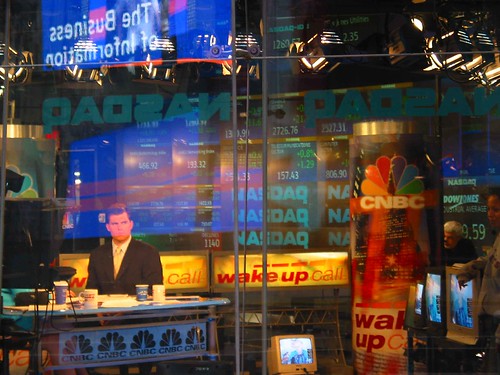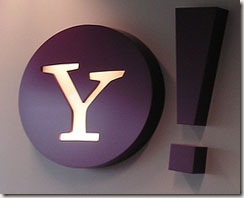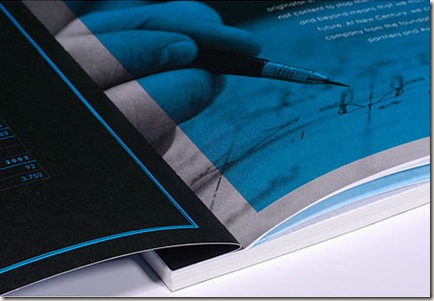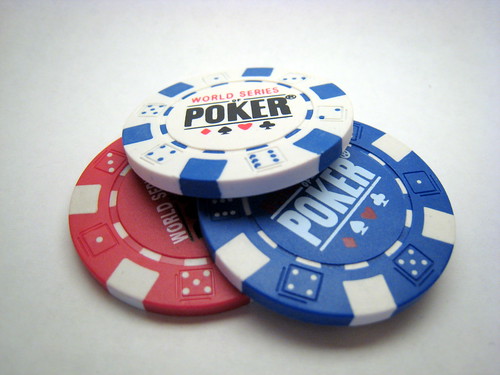This is the final part of a three-part series on structured warrants on the Singapore Exchange (SGX). The first two articles can be found here and here. This week, we focus on key warrants terms that investors must know, the specific methods of warrant investing and key investment risks for warrants.

[Photo: Ed100]
| Only for CashBench Group Members
Those who join CashBench on Yahoo! Groups will immediately receive this entire three-part series on warrants in a single PDF report for easy reference, wherever you are. What's more, membership is free and you’ll also receive updates once a week or less often on new analysis, forecasts and news from CashBench! To join CashBench now, just provide your email address below. |
Key Warrant Terms:
If you have found a good reason to invest in warrants by now, it’s time to go through the key warrant terms that you will encounter when investing. Among these terms, the more important ones are the warrant name format, and conversion ratio. These have been placed right at the top of this section. The remaining terms are more technical in nature and are also included for your reference.
Warrant Name Format
First, let’s start with the name of a warrant on the SGX. Every listed warrant uses a name that contains some useful information to the investor. It follows this format:
| [Underlying] | [Ex. Price] | [Issuer] | [Ex. Style] | [Call or Put] | [Expiry Date] |
| STI | 3000 | SGA | e | CW | 091029 |
An example of a warrant name is STI 3000SGAeCW091029. The name tells us that the underlying asset of this warrant is the STI index with an exercise price of 3000. Since the STI is an index, 3000 refers to the index level and not a dollar amount. For warrants on a single underlying stock, the warrant name does not include the exercise price. Next, the third-party issuer is SGA, or Societe Generale. Other common issuers are DB for Deutsche Bank and MBL for Macquarie Bank. The “e” tells us the exercise style is European. CW represents a Call Warrant, whereas PW means a Put Warrant. The last 6 digits is the expiry date. For this example, 091029 refers to an expiry date of 29 Oct 2009. The 6 digits therefore uses the YYMMDD date format.
Despite the useful information contained within the warrant name, these are not sufficient to a potential investor. There are other terms you may encounter and they are covered in the rest of this section.
Conversion Ratio
The conversion ratio for a warrant is another term that every warrant investor must know. When a warrant investor exercises the right to buy or sell the underlying asset of a warrant, the conversion ratio determines the number of warrants needed to buy or sell each underlying asset. For example, a 1-to-1 conversion ratio for a DBS call warrant means 1 warrant can be used to buy 1 underlying DBS share. If the ratio is 10-to-1, 10 warrants is needed to buy 1 underlying DBS share, and so on.
3 States of Every Warrant
Next, we look at the 3 possible states of a warrant. Every warrant is always in one of 3 states, In-The-Money (ITM), Out-of-The-Money (OTM), or At-The-Money (ATM). These are just short forms to describe if the warrant has any exercise value.
- In-The-Money (ITM) occurs when the warrant has exercise value. For a call warrant, the current underlying asset price must be higher than its exercise price (Example: Call warrant with exercise price of $15 and the current underlying is $20). For a put warrant, the current underlying price must be lower than its exercise price.
- Out-of-The-Money (OTM) is the reverse of ITM where a warrant does not currently has any exercise value. We do not have any right to exercise a warrant in an OTM state, and if it remains such as, the warrant expires worthless.
- At-The-Money (ATM) occurs when the current underlying asset price of a call or put warrant is exactly equal to its exercise price (Example: Call warrant with an exercise price of $15, and the current underlying price is $15 too).
Intrinsic Value & Time Value
Intrinsic Value is just another name for Exercise Value … equal to the gain we get if we can exercise the warrant immediately…
Next, the price of every warrant can always be broken down into 2 components, intrinsic value or time value:
- A warrant has intrinsic value only when it is in the ITM state. Therefore, intrinsic value is just another name for exercise value. Intrinsic value is equal to the gain we get if we can exercise the warrant immediately. (Example: Call warrant with exercise price of $15 and underlying share price is now $20. The intrinsic value is then calculated as $20 - $15 = $5).
- All warrants also have a time value. This value is not as simple to calculate. Investors just need to know that the time value of a warrant quickly decreases to zero as its expiry date approaches. This is also the reason why investors do not usually invest in warrants that will expire soon because the price of an expiring warrant is more likely to drop due to a rapidly decreasing time value.
Together, the intrinsic value and time value will equal the price of a warrant. This is the price that an investor will need to pay to buy a warrant. As a warrant will always has some time value left before its expiry date, the price of a warrant is always positive.
Premium
We have just a few more terms to cover. Premium for warrants refer to the percentage price change in the underlying asset needed to break even. The calculation of premium assumes we will hold the warrant until expiry. For example, a premium of 10% for a DBS call warrant means the share price of DBS must increase by 10% for an investor to cover the cost of buying the warrant. Any further increase means the investor has made a profit.
Some investors choose warrants based on its premium, but this is not usually a good idea because premiums do not determine warrant prices. Instead, investors should use the major factors described in the second article of this series (E.g. Underlying Asset Price, Implied Volatility, etc) to choose which warrants to invest in.
Gearing, Effective Gearing, & Delta
... a 5x Effective Gearing means a 10% increase in DBS Shares will result in a 50% increase in the DBS warrant price.
Gearing and Effective Gearing are measures used to determine the leverage effect of buying a warrant compared to buying the underlying asset. Effective Gearing is the more accurate measure, calculated using the Delta and Gearing of the warrant. There is however no need to know the specific calculation.
What’s important here is to interpret Effective Gearing. For example, if a warrant has an Effective Gearing of 5 times, the warrant price will theoretically change 5 times more than the underlying asset. Using the DBS shares example again, a 5x Effective Gearing means a 10% increase in DBS shares will result in a 50% increase in the DBS warrant price.
However, please note that the Effective Gearing of a warrant is not constant and changes as the warrant moves among the 3 states (OTM, ATM & ITM). For this reason, Effective Gearing is best used as an approximate reference and investors may want to monitor this regularly for changes.
How to invest in Warrants:
There are 2 basic approaches to investing in warrants, buy and hold, or sell-before-expiry.
If you have read this far, you must be eager to start investing in warrants. We are almost ready for real action! There are 2 basic approaches to investing in warrants: buy and hold, or sell-before-expiry.
Buy & Hold Approach
This approach is not usually recommended, and the reasoning is simple. It is already a tough job to forecast whether the underlying asset price of a warrant will increase or decrease. What’s more, there are other factors that influence warrant prices as CashBench has already explained. If we adopt a Buy & Hold approach, how can we be sure that all these factors are working in our favour on a single day – the day that the warrant expires?
However, if you do feel extremely confident of your forecast, do take note of the following points:
- Auto-Exercise / Exercise Notice: Don’t assume that a warrant that has exercise value will be automatically exercised on your behalf. It often is, but if it isn’t, you must submit an exercise notice. Details will be available with the issuer of the warrant.
- Cash / Physical Settlement: You may have an option to either receive cash upon exercising your warrant, or to get the underlying asset transferred to your Central Depository (CDP) account. Again, check with the warrant issuer. Do note that all warrants on stock indices will be cash-settled because it’ll be too messy to distribute the component stocks of the index to you.
- Settlement Price: The price that is used to calculate any gains for you is usually not based on the closing price of the underlying asset on the expiry date of the warrant. This will be specified by the warrant issuer in advance, and is typically based on an average of the last 5 closing prices of the underlying before expiry. This helps to avoid deliberate price manipulations by speculators. However, warrants issued for a stock index (e.g. STI) will usually be based on the closing index level on expiry date as stock indices are less subject to manipulations.
- Settlement Calculation: To determine how much gain you are entitled to when exercising a warrant, use this formula: (Settlement Price – Exercise Price) ÷ Conversion Ratio. Let’s look at a quick example. We have a call warrant on DBS with a settlement price of $20, an exercise price of $15 and a conversion ratio of 10. The gain per warrant = ($20 - $15) ÷ 10 = $0.50.
Sell-Before-Expiry Approach
All warrant investors … must know that they cannot buy or sell a warrant right up to its expiry date.
The second approach to warrant investing is Sell-Before-Expiry. Compared to the Buy & Hold approach, this approach is more flexible and similar to stock investing. Instead of waiting for the warrant to expire, we buy a warrant and regularly monitor all the major factors that affect its price. Recall that these factors include the price of the underlying asset, implied volatility, and time-to-expiry. The last major factor is the exercise price, but this does not need to be monitored because it remains constant. Instead, we select a warrant with an appropriate exercise price right at the start of investment.
Once the first 2 factors move in our favour considerably, we will sell the warrant immediately and not wait for it to expire. Our gain will simply be the price we sold the warrant minus the price we paid for it initially. Of course, we may also make a loss. Since this approach is so similar to stock investments, many warrant investors use this approach by default.
However, all warrant investors that use this approach must know that they cannot buy or sell a warrant right up to its expiry date. For most warrants, the last trading day is the 5th business day before expiry. If in doubt, check with the warrant issuer!
What are the investment risks:
The maximum loss for warrants is much more likely to occur than stocks because of the limited life of all warrants.
This series on investing in SGX structured warrants is almost complete. You now have almost all the key knowledge required to invest in warrants. We end with the most important section of all: what are the risks of warrants investing?
We already know by now that warrants depend on quite a lot of factors to work properly and there are therefore many risks to warrants investing. Some of the major risks include the following:
- Liquidity: You may not always be able to buy or sell a warrant whenever you want to. This is because each warrant has a specified maximum issue size. When there is very strong demand for a particular warrant, the warrant issuer may not have enough remaining warrants to sell to you. This may result in unpredictable and volatile warrant prices.
- Currency: Similar to stocks, any warrants that are quoted in a foreign currency is subject to currency fluctuations. These fluctuations may be in your favour or against you.
- Issuer: Structured warrants are usually issued by large and stable banks. However, we know that banks can get into trouble too. If the issuing bank fails or goes bankrupt, our warrants may become worthless even if the underlying asset price moved in our favour.
- Underlying Asset: Just like any bank, the underlying asset of a warrant can get into trouble too. If the underlying asset is a company and it goes bankrupt, or its shares is suspended or delisted, our warrants may become worthless. Check the warrant terms & conditions for the specific actions that the warrant issuer will do in these scenarios.
- Maximum Loss: The maximum loss when investing in warrants is the initial price we paid for the warrants. This is also true for stocks. However, the maximum loss for warrants is much more likely to occur than stocks because of the limited life of all warrants. In just a few months, all money invested in a warrant can go down the drain, never to come back.
You now know all the key features of warrants and every other important aspect needed to start investing. The warrant websites maintained by the major warrant issuers are important references from here onwards. These include Societe Generale, Deutsche Bank and Macquarie Bank. These websites provide information on warrants currently available and related data such as underlying asset price, implied volatility and exercise price.
If you have found this series useful, share your comments and do keep up with the latest analysis, forecasts and news on CashBench. To receive updates or get this series in a single PDF report now, join CashBench on Yahoo! Groups by providing your email address below.







 For those who wants to be updated via email on new analysis, forecasts and news from CashBench, simply join the CashBench group on Yahoo today. It’s free and group members will receive email updates once a week or less often. This will ensure every update from CashBench will be useful, and you are not overloaded with emails too.
For those who wants to be updated via email on new analysis, forecasts and news from CashBench, simply join the CashBench group on Yahoo today. It’s free and group members will receive email updates once a week or less often. This will ensure every update from CashBench will be useful, and you are not overloaded with emails too.


